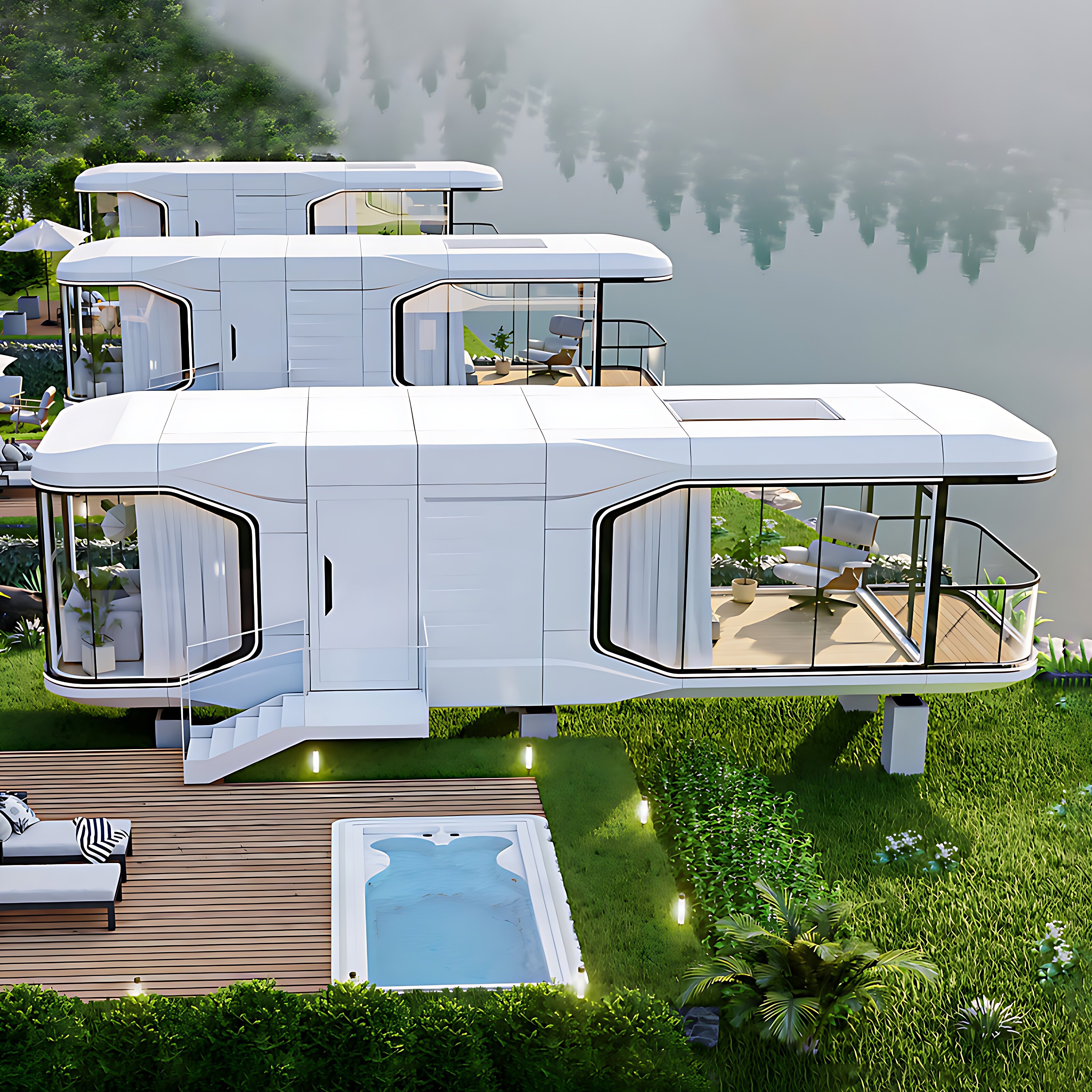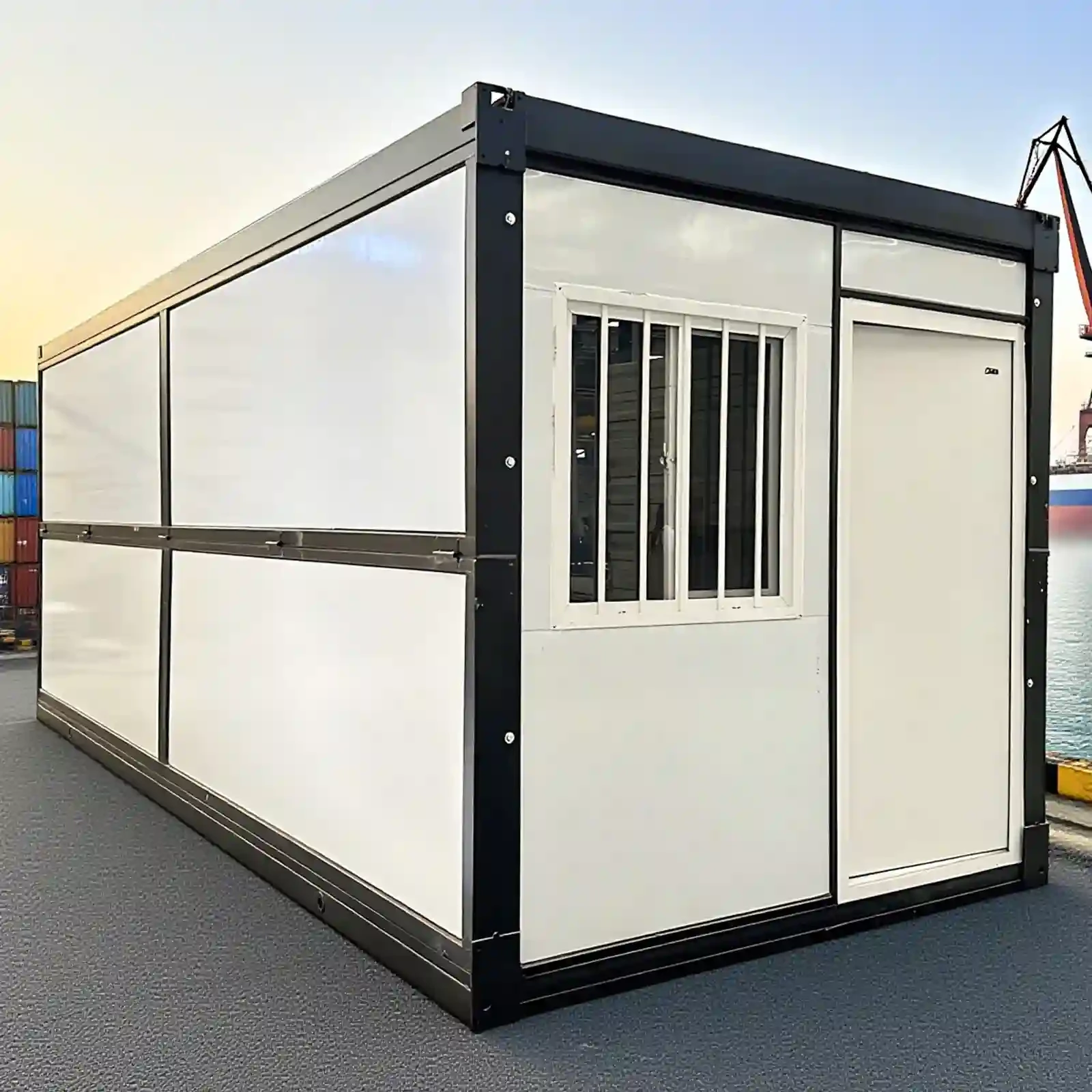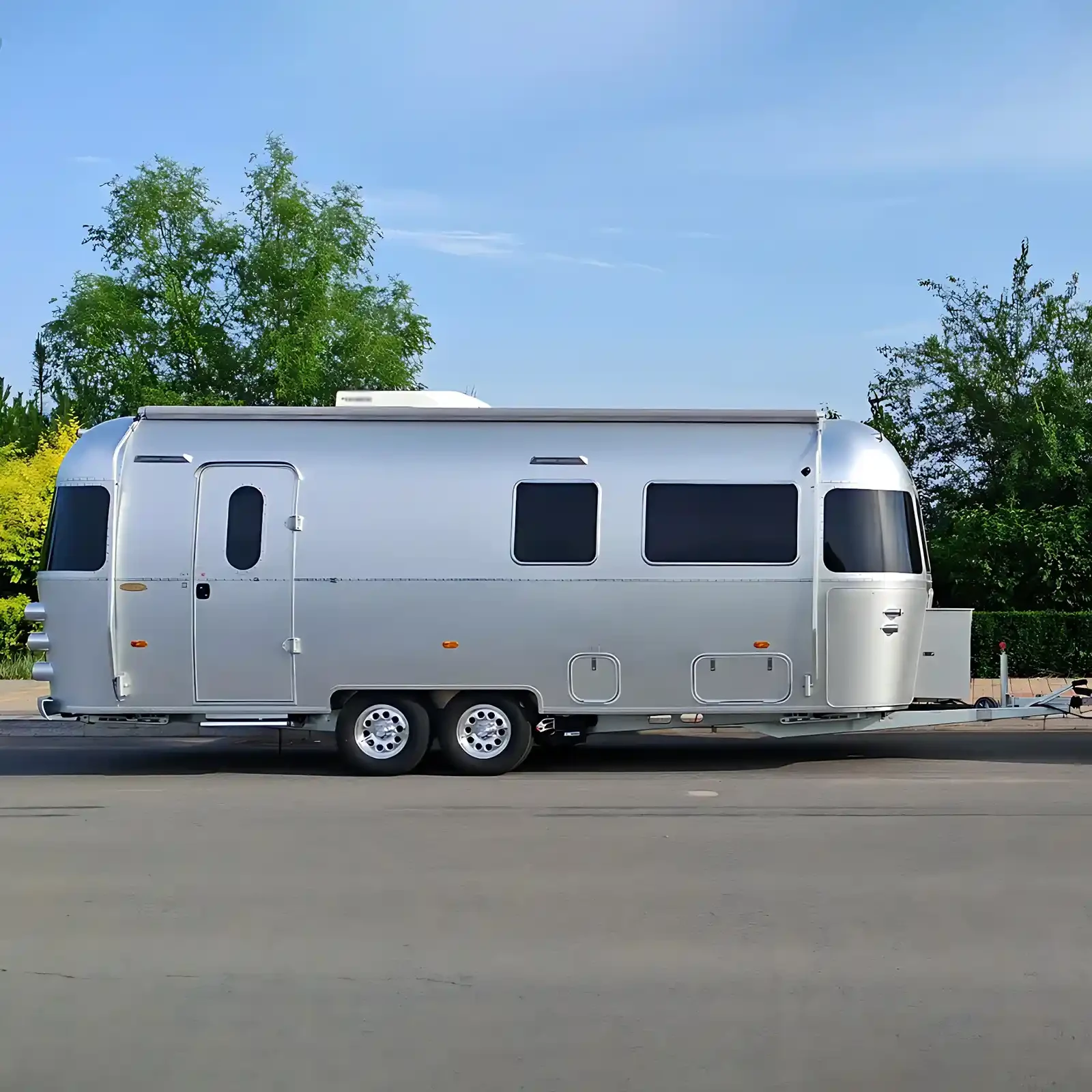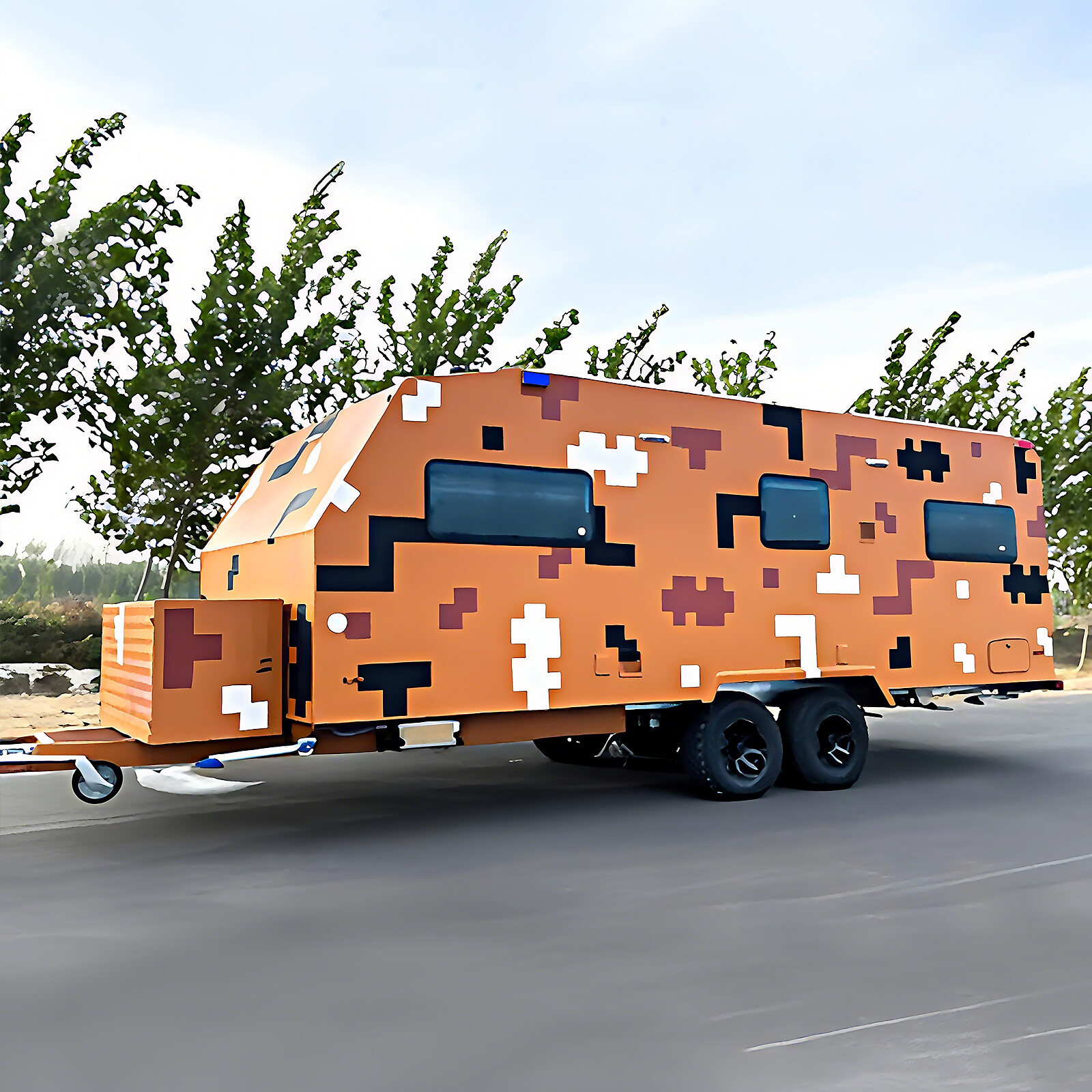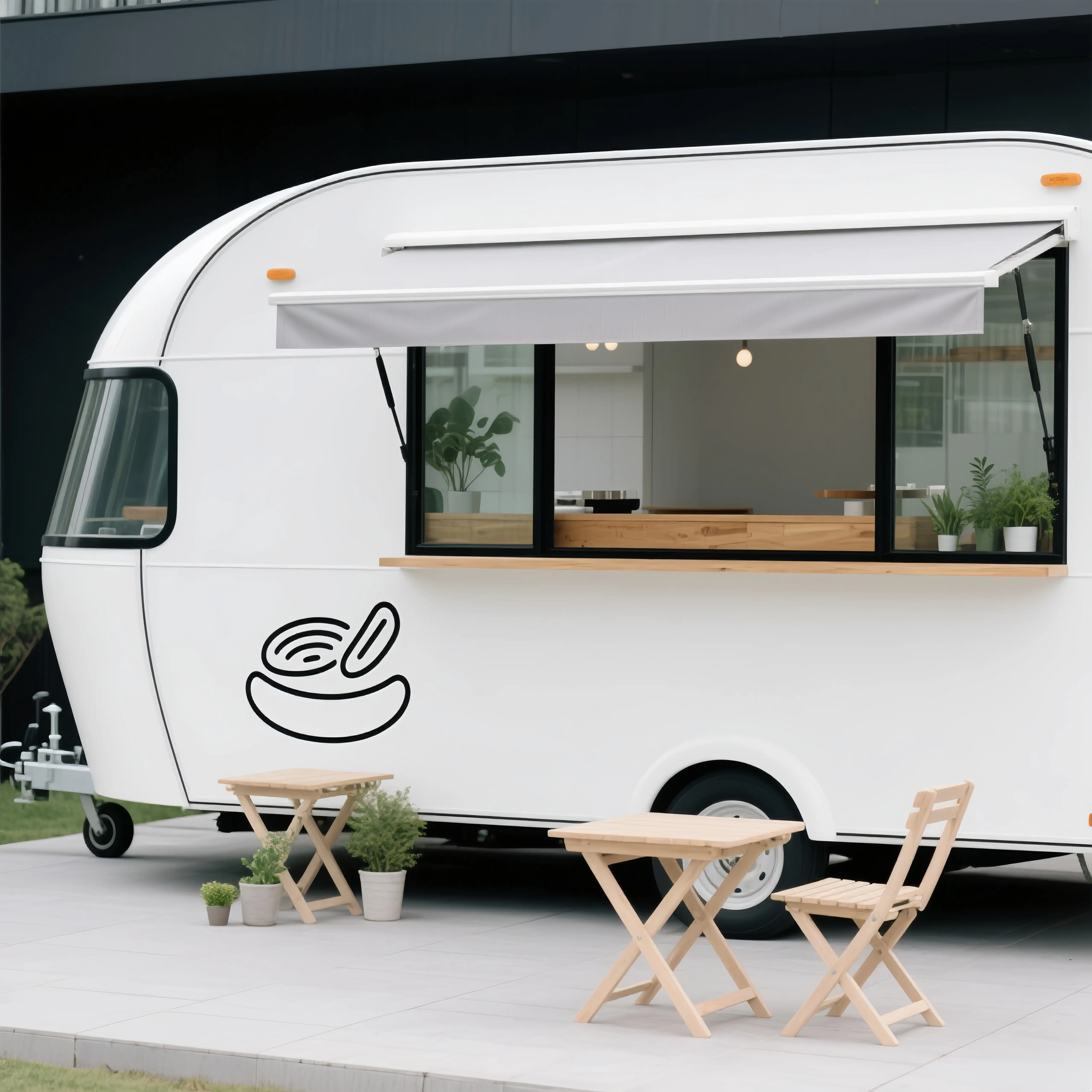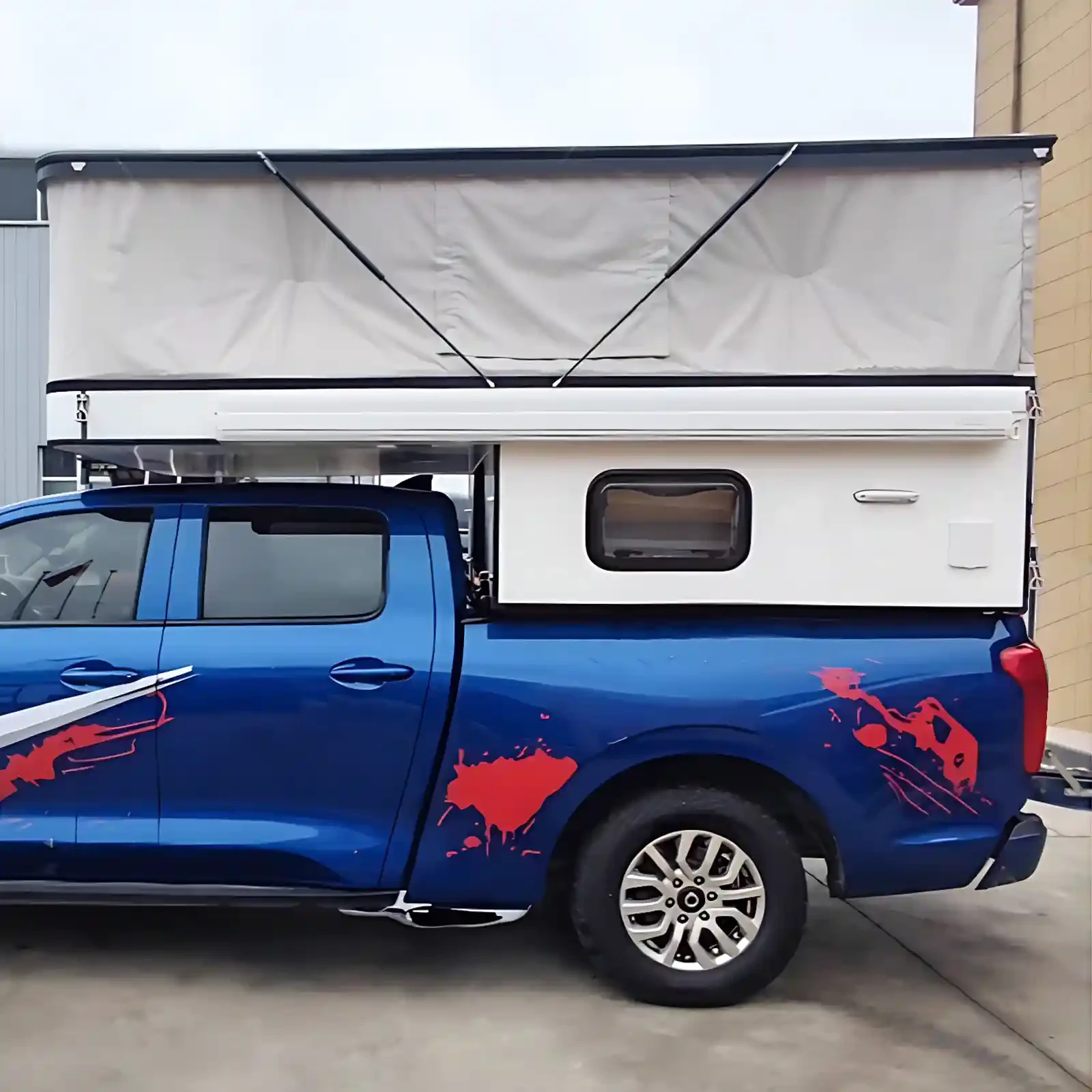As housing needs become increasingly diverse, mobile space capsules, as an emerging form of living, are emerging with their unique cost advantages. This innovative living solution demonstrates significant cost control capabilities across multiple key aspects of the entire lifecycle, from construction to use.
Short construction period, saving time and cost
Traditional house construction involves a tedious process, from land leveling and foundation construction to main structure construction and interior and exterior decoration, often taking months or even years. During this time, labor costs, equipment rental fees, and additional expenses due to delays accumulate. Space capsule homes, on the other hand, utilize a modular prefabricated production model, with most components manufactured in-house. The controlled factory environment and standardized production processes significantly improve production efficiency. For example, the main structure of a standard space capsule home can be prefabricated in a factory in just one to two weeks. Once transported to the site, a professional installation team, utilizing proven installation processes, typically completes the entire structure in one to three days, shaving months off the traditional house construction process. This means investors can put their homes into use faster and realize profits more quickly, effectively reducing time costs. For example, in a tourist attraction, traditional holiday cabins might take six months from planning to opening. However, with space capsule homes, operations can begin in two to three months. This increased operational time generates significant revenue.
Material cost optimization, outstanding cost performance
Main structural materials
Aluminum alloy or steel is often used for the main structure of space capsule housing. Aluminum alloy has low density but high strength. Compared with traditional construction steel, aluminum alloy is lighter at the same strength, reducing transportation costs. Furthermore, aluminum alloy's excellent corrosion resistance significantly reduces ongoing maintenance costs. For example, in humid environments such as coastal areas, traditional steel structures may require frequent anti-corrosion paint and maintenance, while aluminum alloy structures can maintain excellent condition for a long time. The use of recycled steel also has a positive impact on cost control. Recycled steel is typically 20%-30% cheaper than virgin steel, not only reducing material procurement costs, but also significantly reducing energy consumption and carbon emissions during the production process, complying with environmental protection policies and potentially qualifying for relevant policy incentives.
Enclosure materials
Environmentally friendly panels such as polystyrene and polyurethane sandwich panels are widely used in space capsule enclosures. These panels offer excellent thermal insulation. While priced similarly to conventional building materials, they significantly reduce energy consumption. In the long run, the energy savings far outweigh the material price difference. For example, in cold winter regions, space capsules using these insulating panels can reduce heating energy consumption by 30% to 40% compared to conventional buildings. Furthermore, their relatively simple production process and recyclable raw materials further reduce overall lifecycle costs.
Low maintenance cost, more economical for long-term use
The capsule housing structure features a simple design, with modular components that are easily disassembled and replaced. If a component develops a problem, extensive repairs are unnecessary; simply replace the damaged module. Compared to the complex structure and finishes of traditional homes, repairs are significantly easier and more costly. For example, if a capsule's exterior wall panels are damaged by external forces, professionals can quickly remove and replace them, potentially costing only a few hundred yuan. Repairs to the exterior walls of traditional homes, on the other hand, can involve multiple steps, including scaffolding, wall repair, and repainting, costing thousands of yuan or more. Furthermore, the materials used in capsule housing, such as aluminum alloy structures and environmentally friendly insulation panels, are known for their durability and corrosion resistance. Under normal use, this significantly reduces maintenance frequency and long-term costs. According to statistics, over a 10-15 year lifespan, the maintenance costs of a capsule home can be 40%-50% lower than those of a traditional home.
Energy cost savings, green energy conservation and benefits creation
Space capsules offer significant advantages in energy efficiency. LED lighting is widely used in lighting systems, reducing energy consumption by over 80% compared to traditional incandescent bulbs. For example, a 40-watt traditional incandescent bulb, used for five hours daily, would cost approximately 43.8 yuan per year. Replacing it with a 5-watt LED bulb would only cost 5.475 yuan per year, significantly saving significant energy costs over the long term. For heating and cooling, space capsules are equipped with highly efficient heat pump systems, achieving an energy efficiency ratio of 3-4, significantly higher than traditional electric heaters or air conditioners. For example, during summer cooling, a 1-kilowatt traditional air conditioner consumes 1 kilowatt-hour of electricity per hour. For the same cooling efficiency, a space capsule equipped with a heat pump system consumes approximately 0.3-0.33 kilowatt-hours per hour. Furthermore, the excellent thermal insulation of space capsules reduces heating and cooling loads, further reducing energy consumption. Many space capsules also have photovoltaic panels installed, generating solar power to meet some or all of their electricity needs, reducing reliance on the traditional power grid and lowering electricity costs. In sunny areas, a space capsule equipped with 5 square meters of solar photovoltaic panels can generate 2-3 degrees of electricity per day, saving thousands of yuan in electricity bills each year.
Mobile capsule housing offers significant cost advantages in terms of construction cycle, material selection, maintenance, and energy utilization. From rapid construction and low material costs in the short term to low maintenance and energy costs in the long term, it provides investors and residents with an affordable and sustainable living solution, making it highly competitive in the housing market.

 USD
USD
 GBP
GBP
 EUR
EUR
